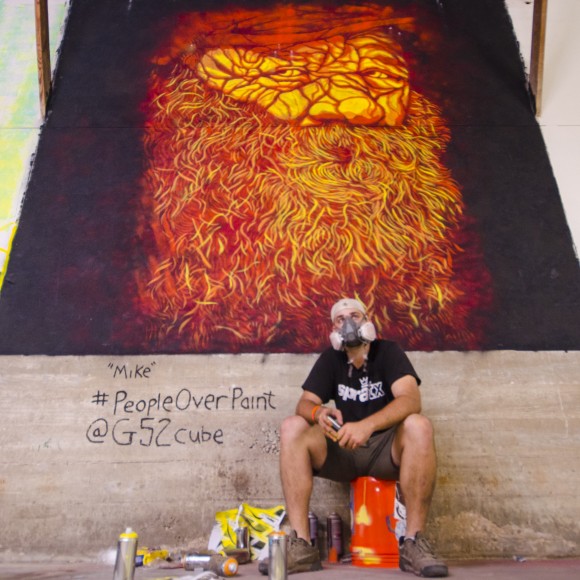
“Mike,” for one of the first men Seve interviewed for the #PeopleOverPaint series.
Steven is a chef; Dean a blues musician. Mike has lived in every state that I-10 touches. All were experiencing homelessness when Severiano Garza ’12 decided one day that he would no longer walk right past them in his hometown of Austin, Texas – that he would introduce himself, offer a sandwich and start a conversation.
Now Garza, an artist and entrepreneur, is sharing their stories and creating their portraits as part of his
#PeopleOverPaint
series, which he hopes “will make our differences less important and encourage people to look at one of our nation’s most relevant problems in a deeper way.”
And Garza isn’t alone in his outreach. Homelessness is at the center of enrichment efforts by a host of Chapman people, including students who spend their spring break serving meals, building beds, tutoring students and taking on other tasks at shelters serving those in need.
An Artistic Approach
Since he was a boy, Garza has volunteered for
Caritas
, an Austin nonprofit that each year serves more than 20,000 people whose opportunities have been limited by poverty and homelessness. But after he graduated from Chapman University and moved back to his hometown, he wanted to apply his artistic talents to address the problem.
Garza took classes at Caritas so he could reach out to those experiencing homelessness and feel confident that he was prepared to listen and help.
“I didn’t want to be a scientist performing a social experiment,” he says. “I wanted to be someone who is raising awareness.”
He gets to know those he approaches and then often asks if he can take their picture so that he can paint their portrait. When the works sell, he gives the person 10 percent of the proceeds.
Garza says he continues to work through “questions in my head, whether what I’m doing is OK – whether I’m helping by calling attention to them.”
He adds that so far he perceives that the experience has been positive for everyone. “All of those I’ve painted have approved beforehand and have liked the pieces,” he says.
With their bright colors and often larger-than-life size, the works certainly put a distinctive face on the problem of homelessness.
“I see myself in the people I paint,” Garza says. “I think it’s important that we try to share their struggles. Human compassion is incredibly important, but to show it, we have to understand.”
In a talk during TEDxYouth in Austin, Garza shared his perspective on creativity, street art and his community outreach.
“I want us to rethink what is beautiful,” he says. “I’m hoping that others will take my idea and affect change in ways that I can’t. I’m excited to see where this whole project goes.”
Alternative Spring Break
For five years, Chapman students have been going to the San Francisco Bay Area during their spring break to do their own outreach assisting those experiencing homelessness. The students can hardly solve the problem during a week of assembling bunk beds, cooking meals and tutoring school-age residents. But they can make a tangible difference in the lives of real people as they also “see how meaningful civic engagement can be,” says Justin Koppelman ’04 (M.A. ’09), assistant director of student engagement for civic engagement initiatives at Chapman.
Julia White ’16, a peace studies and political science double major, wanted something other than an escape during her spring break this year.
“I wanted to do something bigger,” she says. “I saw this as an amazing opportunity to serve and learn and grow.”
As the student facilitator for this spring’s weeklong stay assisting the
Bay Area Rescue Mission
, White not only helped keep daily projects on track, but she also led discussions at the end of each day.
Students felt free to wonder: Does a day of organizing a storage shed full of school supplies and toiletries really help those in need take strides to escape poverty? The conclusion: “When you’re working with nonprofits, every little bit helps,” White says. “Even when you’re not deconstructing the entire issue, you can add efficiency, and that’s super helpful.”
Then there are the days when the impact is as close as the child sitting next to you. White remembers a particular third-grade girl she was helping with her reading assignment at the shelter. The youngster had trouble focusing, but once White got her to stay on task, the child showed that “she is super smart and has lots of potential,” White says. “It’s heartbreaking that she’s not being told that enough. I’ll always remember our moments of interaction.”
Brightening Young Lives
Jennifer Heinz ’12 also remembers her 2010 tutoring experience during her alternative spring break assisting residents of
Family Supportive Housing
in Santa Clara County. In their classrooms, the youngsters were always surrounded by lots of bright colors, Heinz says.
“There should never be a classroom without color,” adds Heinz, whose degree is in integrated educational studies and who minored in leadership and psychology.
But perhaps the most satisfaction she got was preparing and serving meals to the homeless families, whose gratitude was apparent in their bright smiles and warm hugs.
“I felt so happy for them – that they could forget the outside world and enjoy the moment at hand,” Heinz says. “For all of us it was a safe place to start a new journey.”
Heinz’s postgraduate journeys have included working for the
Boys and Girls Club of Tustin
and now as a youth education specialist for the
Children Youth and Family Collaborative
in Los Angeles. She says she still draws on her spring break experience four years ago.
“It was great to be able to go with a group of students who shared the same initiative – to spend spring break helping others,” she says. “It was a very close-knit group, and all of us have ended up following our dreams.
“We’re all working to make our communities better.”
Photo at top: “The Conductor” at the
Hope Outdoor Gallery
. At roughly 12 ft. x 14 ft., Seve spent over 30 hours cutting stencils and over $200 on paint.
For some people experiencing homelessness, their dog becomes their companion animal — and their home. Chris White (MFA ’05) shot and produced a series of videos for a museum exhibit called My Dog Is My Home, about homeless people and companion animals. “It’s a little studied topic and was an eye/heart opening experience for me,” White said. The exhibit was for the
National Museum of Animals & Society
. The physical exhibit is no longer up at the museum, but is traveling around the country and can be viewed online at
www.mydogismyhome.com
.
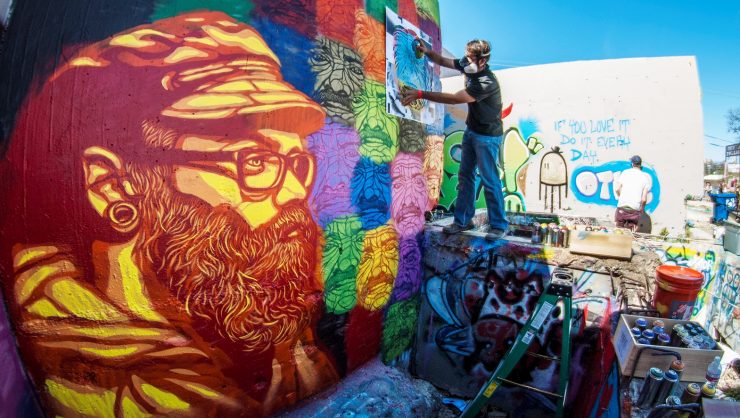
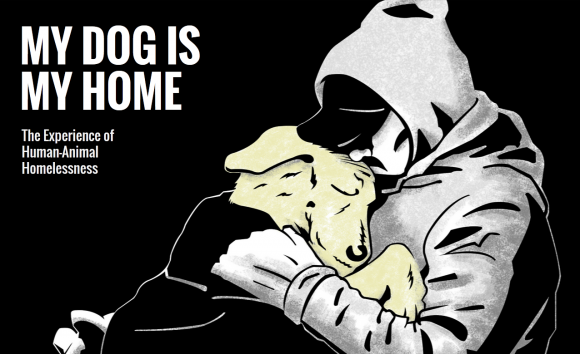
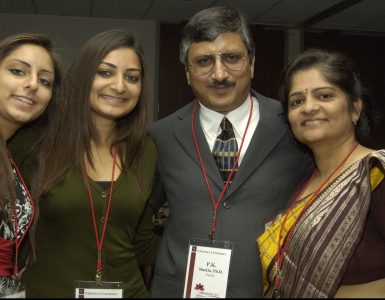
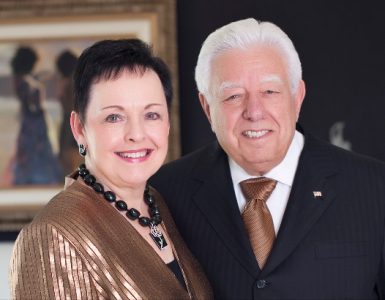
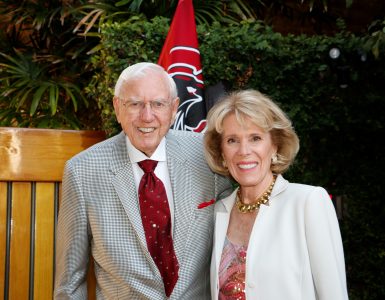

Add comment